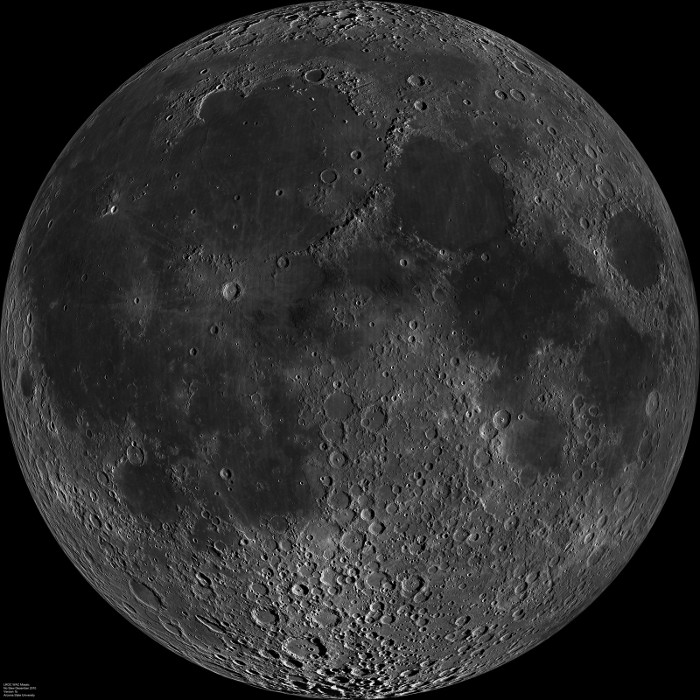The new discovery supports the hypothesis of the formation of the Moon
According to a joint study among researchers at Johns Hopkins University, Cambridge University and Claude Bernard University, a layer of iron and other elements deep underground is evidence that scientists have long ago seeking to support the hypothesis: The moon was formed by an early planet-like object that hit Earth about 4.5 billion years ago. The research report was published in Nature Geoscience.
The study used simulations of Earth's impact as evidence to prove that a stratum layer below the mantle layer is in seismic data, which was formed when the Earth was hit by a smaller object and to enter. The team thinks that this same effect has pushed large quantities of debris into space to create the Moon.
"Our experiments add evidence to support this hypothesis of a huge impact," said Maylis Landeau, lead researcher. "The giant impact scenario also explains the stratification conjectured by the earthquake above the Earth's core today. This result shows the relationship between the structure of the Earth's core today and the Earth formation ".

The giant impact scenario also explains the stratification conjectured by the earthquake above the Earth's core today.
GS. Peter Olson, co-author of the study, argued that the theory of the giant impact on the formation of the Moon is the most popular scientific hypothesis about the process of forming Earth's satellites, but has not yet been proven There is no authentic evidence."We think this stratification layer may be authentic evidence , " GS. Olson said. "The properties of that stratified layer are suitable to be considered traces of huge impact ."
The team's argument is based on seismic evidence of stratified layers - which can be about 200 miles thick and below the Earth's surface 1,800 miles - and lab experiments that simulate the instability of the dynamic. In particular, this instability is thought to cause stratification , meaning a mixture of materials in layers rather than a homogeneous structure at the top of the core.
This stratified layer is thought to include a mixture of iron and lighter elements such as oxygen, sulfur and silicon. The existence of a stratified layer is determined by seismic images, because this layer is too deep to be directly sampled.
To date, most simulations of giant impact have been done in numbers, but failed to solve the instability of impact. GS. Olson believes that this instability is difficult to simulate math and no computer model can successfully simulate.
In the experiment, the researchers used liquids that closely resemble the chaotic mix of materials to simulate the effect that occurs when the planet's object acts at the time of the Earth's formation. entirety.

The object emitted from the planet makes the Moon smaller or equal to Mars.
GS. Olson said the experiments depend on the " dynamic similarity " principle. In this case, that means how to reliably compare liquid flows without re-creating the scale, materials and forces affecting the Earth at first, but not being able to do it. Instead, the experiment simulates important ratios of forces acting on each other, causing instability of impact, leading to the formation of a layered material mixture.
The researchers conducted more than 60 experiments, of which about 99g of salt or ethanol represents an object emitted from the planet and hit the Earth and fell into a rectangular container containing about 22 liters of water representing Early Earth. In the water tank there is a combination of unmixed fluids: the top rising oil represents the Earth's mantle and the lower water represents the Earth's core.
Impact analysis has indicated that the remaining material mixture has different quantities and the distribution of the mixture depends on the size and density of the ejected object hitting the Earth. The larger the object, the more likely that the entire Earth core, not just one layer, will be a mixture of materials. The team also argues that objects emitted from planets make the Moon smaller than or equal to Mars.
- History of Moon formation
- New theory of Moon formation
- New hypothesis about the origin of the Moon
- Hypothesis of black plate formation on the Moon
- New hypothesis about the solar system
- Ancient Mars atmosphere resembles Earth
- Couple of spacecraft studying the moon
- A new theory about the Earth - when life begins
- Unable to find a more reliable theory than Big Bang
- Hypothesis of the past, present, future coexists in the universe
- New hypothesis about the origin of the moon
- Water on the Moon and Earth has the same origin
 Van Allen's belt and evidence that the Apollo 11 mission to the Moon was myth
Van Allen's belt and evidence that the Apollo 11 mission to the Moon was myth The levels of civilization in the universe (Kardashev scale)
The levels of civilization in the universe (Kardashev scale) Today Mars, the sun and the Earth are aligned
Today Mars, the sun and the Earth are aligned The Amazon owner announced a secret plan to build a space base for thousands of people
The Amazon owner announced a secret plan to build a space base for thousands of people